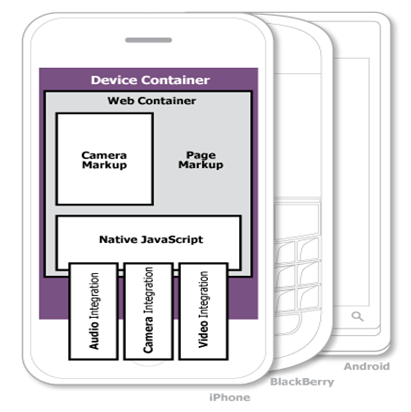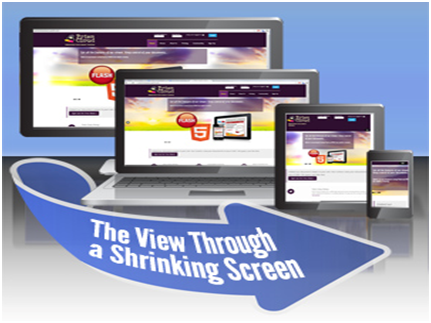Mobile Application Development: Strategies, Approaches and Platforms
By Alex Carter on October 22, 2024

In today’s fast-paced digital market, businesses must adopt customer-centric mobile strategies to drive growth, generate revenue, and maintain a competitive edge. With the rising demand for mobile applications, organizations face the challenge of developing and deploying these apps quickly and efficiently. This article explores key strategies, approaches, and popular platforms for mobile application development, focusing on Mobile Application Development Platforms (MADPs), responsive web design, hybrid apps, and multi-platform compatibility.
Understanding Mobile Application Development Platforms (MADPs)
Mobile Application Development Platforms (MADPs) have emerged as essential tools for companies looking to streamline their app development process. MADPs like PhoneGap and Appcelerator allow developers to create applications that can run on multiple platforms with a single codebase, thus saving time and resources. The MADP landscape has evolved from the Mobile Enterprise Application Platform (MEAP) concept, broadening its focus to include consumer-facing applications.
The core benefit of MADPs lies in the promise of “write once, run everywhere.” This approach eliminates the need to rewrite code for each platform—such as iOS, Android, and Windows—allowing development teams to maintain a single codebase across different devices. This not only reduces development costs but also accelerates the time-to-market for mobile applications.
Best Practices in Mobile Application Development

Embrace HTML5
A crucial step in modern mobile adoption is updating web standards to HTML5, which enhances the user experience with features like improved graphics, multimedia support, and better SEO capabilities. HTML5 allows for easier integration of multimedia elements, eliminating the need for third-party plugins like Flash.
Adopt a Mobile-First Responsive Web Design
With the increasing variety of mobile devices, businesses must ensure their web content is accessible on any platform. A Mobile-First Responsive Web Design (RWD) provides an optimal viewing experience across different devices. By using media queries to tailor styles for mobile, tablet, and desktop layouts, organizations can enhance user satisfaction and engagement.

Exploring Mobile Development Approaches
Hybrid applications combine web technologies and native device features, offering a flexible development approach. They leverage a native container environment, such as iOS’s UIWebView, to present HTML, CSS, and JavaScript content. Tools like Adobe’s PhoneGap create an abstraction layer that allows access to native APIs via JavaScript, enabling developers to write a single codebase that operates across various platforms.
The popularity of hybrid apps is on the rise, driven by their promise of cross-platform compatibility and lower development costs. Gartner forecasts that hybrid apps will constitute a significant portion of the mobile market, highlighting their growing importance.
Multi-Platform and Multi-Device Compatibility
To meet the diverse needs of today’s consumers, businesses must adopt a holistic approach to mobile app development that aligns with their broader retail, marketing, and Big Data strategies. Providing a seamless, organic experience across multiple platforms and devices is essential. Research indicates that a significant percentage of customers use multiple devices when shopping online, emphasizing the need for consistent user experiences.
Key Strategies for Multi-Platform Support
- Customer-Centric Focus: Prioritize understanding customer behavior and preferences through analytics to tailor experiences that resonate with users across different platforms;
- Platform-Agnostic Experiences: Aim to create seamless experiences that are not limited by specific hardware or operating systems, ensuring that content and services are accessible across various devices;
- Target Audience by Platform: Identify demographics for each platform to tailor marketing efforts accordingly. For instance, younger users may favor iOS devices, while older demographics might prefer Windows tablets.
Popular Mobile Application Development Platforms
PhoneGap
PhoneGap is a widely recognized MADP that allows developers to access native device features through JavaScript, facilitating the creation of cross-platform applications. Its “write once, run everywhere” capability makes it an attractive option for organizations looking to streamline their development processes.
Appcelerator
Appcelerator’s Titanium platform also enables developers to create native applications using JavaScript, but it functions differently than PhoneGap. Titanium operates by translating JavaScript into native code at runtime, providing a rich user experience and direct access to device features. Appcelerator offers both community and enterprise versions, along with integrated services for performance monitoring and analytics.
Conclusion
The mobile application development landscape is rapidly evolving, with various strategies and platforms available to help organizations meet consumer demands. By leveraging MADPs, adopting best practices in web design, and considering hybrid approaches, businesses can effectively create and deploy mobile applications that enhance user experience and drive engagement. As the market continues to grow, staying informed about the latest trends and technologies will be crucial for maintaining a competitive edge.
Posted in blog, Web Applications
Alex Carter
Alex Carter is a cybersecurity enthusiast and tech writer with a passion for online privacy, website performance, and digital security. With years of experience in web monitoring and threat prevention, Alex simplifies complex topics to help businesses and developers safeguard their online presence. When not exploring the latest in cybersecurity, Alex enjoys testing new tech tools and sharing insights on best practices for a secure web.
